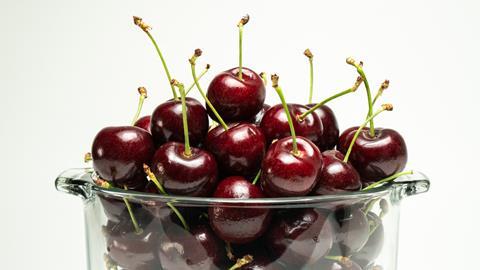Cherry Committee reports record-breaking season in China, but shipments to non-Asian markets down

Chilean cherry exports will remain broadly flat in 2023/24, but exports to China are set to hit a new record, according to the Chilean Cherry Committee.
As the season draws to a close, it said 413,979 tonnes of cherries had been shipped worldwide, 0.3 per cent down on the same period last year. Exports to China stood at 377,000 tonnes, 3.3 per cent above last season.
The committee’s executive director, Claudia Soler, said the season had been positive overall. “In general, we can say that this was a good season, because our cherries were well received by consumers, which allowed the fruit to rotate well, despite the fact that in the first part of the campaign exports showed a decrease of volumes due to the spring rains,” she commented.
Despite the rains, she said the early fruit had arrived on the market in good condition and with high quality because exporters had prioritised air shipments. Mid- to late-season exports were not impacted by the rains.
Asia received 388,062 tonnes of cherries, a growth of 1.5 per cent on last year. But shipments to all other markets decreased. In the case of the US East and West Coasts were down 14 per cent and 52 per cent respectively, totalling 13,977 tonnes.
Exports to Latin America totalled 7,296 tonnes (-20 per cent), Europe reached 3,850 tonnes (-17 per cent), Canada 685 tonnes (-36 per cent) and the Middle East with 109 tons (-61 per cent).
The top 10 varieties of cherries shipped were: Lapins with 43 per cent of the total, Santina (21 per cent), Regina (19 per cent), Sweet Heart and Bing with 4 per cent respectively, Kordia (3 per cent), Skeena (2 per cent), Royal Dawn and Rainer with 1 per cent.
In total, Chile sent more than 36 varieties of cherries to the world. This included small quantities of new early-season varieties such as Meda Rex, Sweet Aryana or Royal Lynn, among others, which are still produced in low volumes.
This season saw a notable growth in airfreighted shipments, particularly in the case of China, which received 15,000 tonnes of airflown Chilean cherries, an increase of 4.4 per cent on last season.
Iván Marambio, president of Frutas de Chile, said: “Without a doubt, this cherry season showed, once again, that the Chilean fruit industry is capable of facing the challenges, because although we had some setbacks such as the lack of cold in winter and spring rains, we were able to send quality fruit”.
For the first time, Cherry Express vessels discharged at the Port of Tianjing, giving easier access to northern parts of China, particularly Beijing and its surroundings.
This season also saw the first ship carrying cherries reach India in record time of 36 days and a single stopover. “This makes us optimistic about how we can develop this market, especially considering that we entered it with zero tariff,” Marambio said.
Soler noted that the sector must not lose sight of the fact that “China is a dynamic market with significant growth potential, which requires us to be constantly attentive to the changes that this market has, as well as deepen its development, stimulating greater consumption in regional cities and charming the youth segment that has a lower consumption of cherries”.



